PECTIN METHYLESTERASE34 Contributes to Heat Tolerance through Its Role in Promoting Stomatal Movement
- PMID: 28381503
- PMCID: PMC5462046
- DOI: 10.1104/pp.17.00335
PECTIN METHYLESTERASE34 Contributes to Heat Tolerance through Its Role in Promoting Stomatal Movement
Abstract
Pectin, a major component of the primary cell wall, is synthesized in the Golgi apparatus and exported to the cell wall in a highly methylesterified form, then is partially demethylesterified by pectin methylesterases (PMEs; EC 3.1.1.11). PME activity on the status of pectin methylesterification profoundly affects the properties of pectin and, thereby, is critical for plant development and the plant defense response, although the roles of PMEs under heat stress (HS) are poorly understood. Functional genome annotation predicts that at least 66 potential PME genes are contained in Arabidopsis (Arabidopsis thaliana). Thermotolerance assays of PME gene T-DNA insertion lines revealed two null mutant alleles of PME34 (At3g49220) that both consistently showed reduced thermotolerance. Nevertheless, their impairment was independently associated with the expression of HS-responsive genes. It was also observed that PME34 transcription was induced by abscisic acid and highly expressed in guard cells. We showed that the PME34 mutation has a defect in the control of stomatal movement and greatly altered PME and polygalacturonase (EC 3.2.1.15) activity, resulting in a heat-sensitive phenotype. PME34 has a role in the regulation of transpiration through the control of the stomatal aperture due to its cell wall-modifying enzyme activity during the HS response. Hence, PME34 is required for regulating guard cell wall flexibility to mediate the heat response in Arabidopsis.
© 2017 American Society of Plant Biologists. All Rights Reserved.
Figures
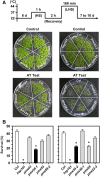

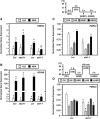
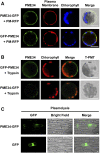
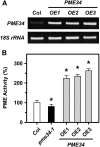

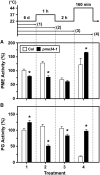

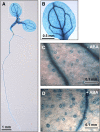



Similar articles
-
ABA-mediated regulation of PME12 influences stomatal density, pore aperture, and heat stress response in Arabidopsis thaliana.Planta. 2025 Jan 9;261(2):29. doi: 10.1007/s00425-025-04606-3. Planta. 2025. PMID: 39786611
-
Pectin methylesterase is required for guard cell function in response to heat.Plant Signal Behav. 2017 Jun 3;12(6):e1338227. doi: 10.1080/15592324.2017.1338227. Epub 2017 Jun 15. Plant Signal Behav. 2017. PMID: 28617153 Free PMC article. Review.
-
Arabidopsis PECTIN METHYLESTERASE17 is co-expressed with and processed by SBT3.5, a subtilisin-like serine protease.Ann Bot. 2014 Oct;114(6):1161-75. doi: 10.1093/aob/mcu035. Epub 2014 Mar 24. Ann Bot. 2014. PMID: 24665109 Free PMC article.
-
Three Pectin Methylesterase Inhibitors Protect Cell Wall Integrity for Arabidopsis Immunity to Botrytis.Plant Physiol. 2017 Mar;173(3):1844-1863. doi: 10.1104/pp.16.01185. Epub 2017 Jan 12. Plant Physiol. 2017. PMID: 28082716 Free PMC article.
-
The Multifaceted Role of Pectin Methylesterase Inhibitors (PMEIs).Int J Mol Sci. 2018 Sep 21;19(10):2878. doi: 10.3390/ijms19102878. Int J Mol Sci. 2018. PMID: 30248977 Free PMC article. Review.
Cited by
-
Balancing Strength and Flexibility: How the Synthesis, Organization, and Modification of Guard Cell Walls Govern Stomatal Development and Dynamics.Front Plant Sci. 2018 Aug 20;9:1202. doi: 10.3389/fpls.2018.01202. eCollection 2018. Front Plant Sci. 2018. PMID: 30177940 Free PMC article. Review.
-
Genome wide identification and functional characterization of strawberry pectin methylesterases related to fruit softening.BMC Plant Biol. 2020 Jan 8;20(1):13. doi: 10.1186/s12870-019-2225-9. BMC Plant Biol. 2020. PMID: 31914938 Free PMC article.
-
Experimental demonstration and pan-structurome prediction of climate-associated riboSNitches in Arabidopsis.Genome Biol. 2022 Apr 19;23(1):101. doi: 10.1186/s13059-022-02656-4. Genome Biol. 2022. PMID: 35440059 Free PMC article.
-
Effect of heat stress on oxidative damage and antioxidant defense system in white clover (Trifolium repens L.).Planta. 2021 Oct 21;254(5):103. doi: 10.1007/s00425-021-03751-9. Planta. 2021. PMID: 34674051
-
Architecture and functions of stomatal cell walls in eudicots and grasses.Ann Bot. 2024 Jul 9;134(2):195-204. doi: 10.1093/aob/mcae078. Ann Bot. 2024. PMID: 38757189 Free PMC article. Review.
References
-
- Alexandrov VY (1994) Functional aspects of cell response to heat shock. Int Rev Cytol 148: 171–227 - PubMed
-
- Baron KN, Schroeder DF, Stasolla C (2012) Transcriptional response of abscisic acid (ABA) metabolism and transport to cold and heat stress applied at the reproductive stage of development in Arabidopsis thaliana. Plant Sci 188-189: 48–59 - PubMed
-
- Bellincampi D, Camardella L, Delcour JA, Desseaux V, D’Ovidio R, Durand A, Elliot G, Gebruers K, Giovane A, Juge N, et al. (2004) Potential physiological role of plant glycosidase inhibitors. Biochim Biophys Acta 1696: 265–274 - PubMed
MeSH terms
Substances
LinkOut - more resources
Full Text Sources
Other Literature Sources
Molecular Biology Databases
Research Materials

